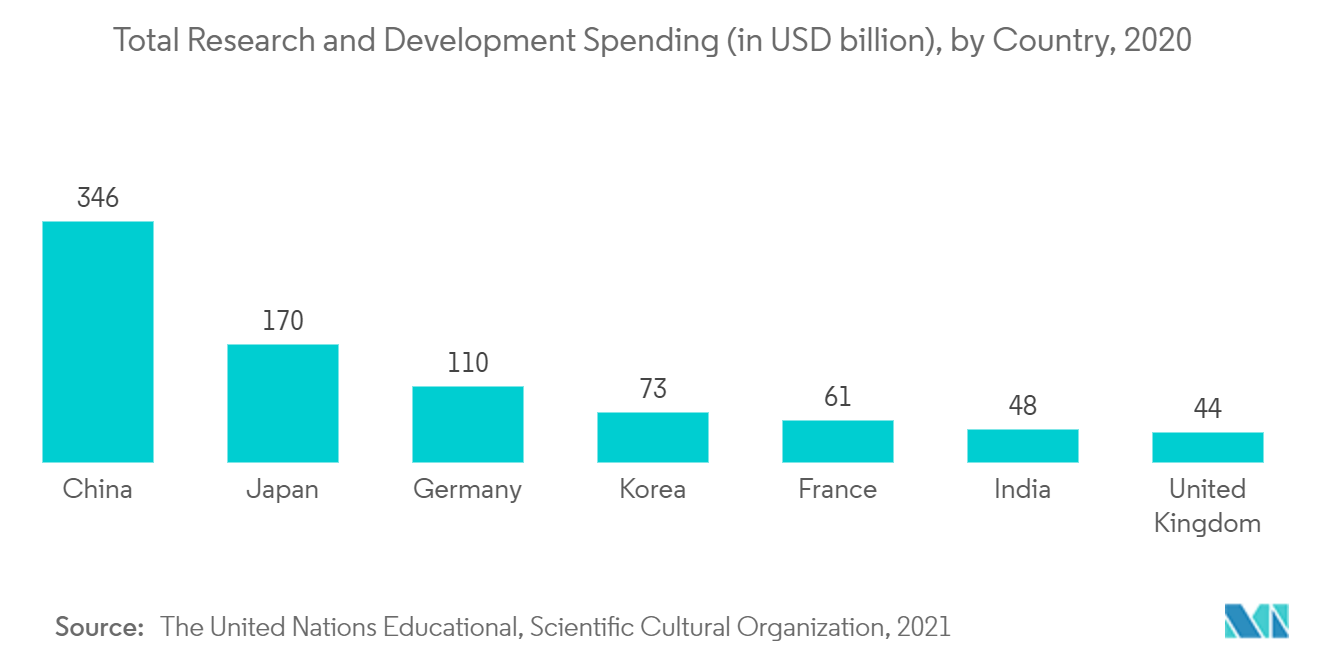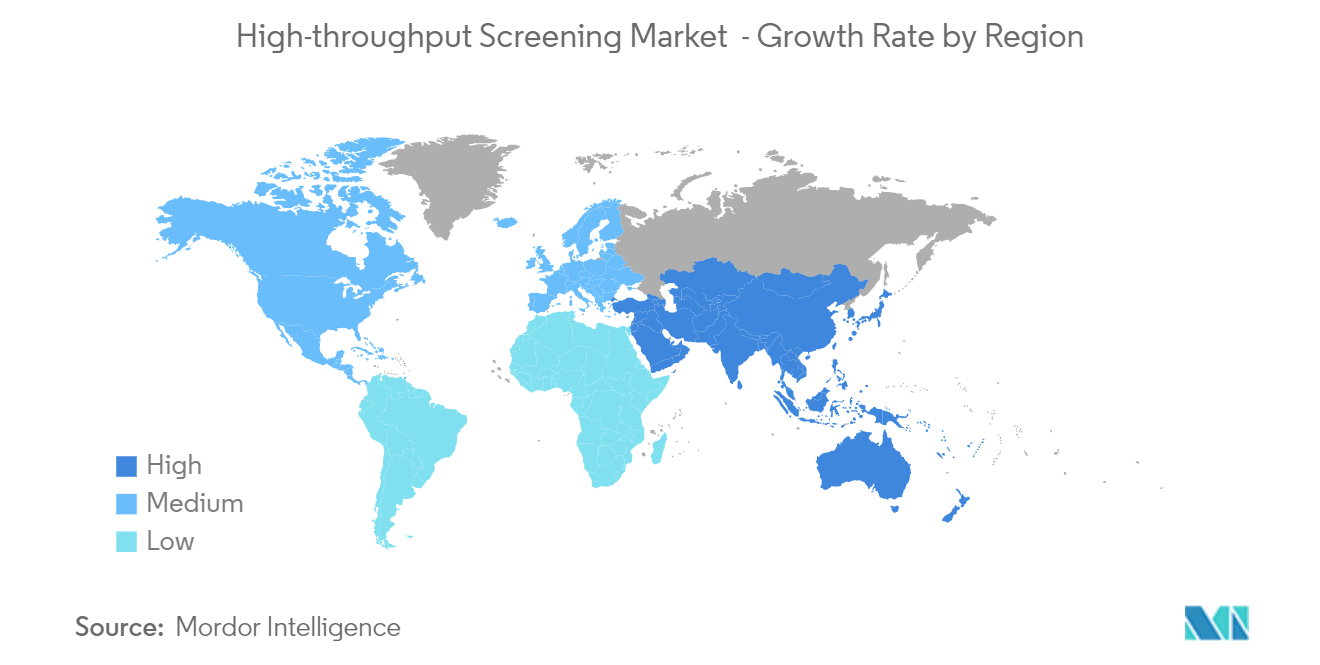Market Trends of Global High-throughput Screening Industry
This section covers the major market trends shaping the High-throughput Screening Market according to our research experts:
Pharmaceutical and Biotechnology Firms Segment Expects to Register a High CAGR Over the Forecast Period
The pharmaceutical and biotechnology firms are expected to witness significant growth in the high-throughput screening market over the forecast period owing to the factors such as the increasing development of novel molecules for the treatment of several chronic conditions.
In addition, the growing need for rapid and precise screening of several target molecules, during drug discovery and development phases has led to the adoption of automated high-throughput screening techniques to screen massive chemical and biomarker libraries generated during the research processes.
Furthermore, according to an article published in June 2020, titled 'High-throughput screening as a method for discovering new drugs', fluorescence-based assays are a practical technique to visualize biological responses to compounds in a high-throughput scenario. In addition, as per the same source, a target molecule can be produced or eliminated in fluorescence experiments to cause signals to be released or quenched. This is expected to increase the adoption of high-throughput screening methods in developing drugs, which is anticipated to propel market growth.
With the increasing pharmaceutical spending on research and development, adoption of various business strategies, and advanced technology and the advantages offered by the high-throughput screening such as high sensitivity (single molecule detection), high speed (automation), minimization of the sample (microtiter plate assay), and the ability to detect low background signals, the high-throughput screening methods are being increasingly adopted in the pharmaceutical industry, boosting market growth over the forecast period. According to the data published by the Congressional Budget Office, in 2021, it has been observed that pharmaceutical industries have spent nearly USD 200 billion on research and development in 2020 globally compared to USD 83 million in 2019. Thus, the increasing investment in research and development by the companies further increases the capabilities of the company to adopt innovative technologies in high throughput screening assays, thereby increasing market growth.
Thus, owing to the aforementioned factors, the market is expected to grow significantly during the forecast period.

North America Dominates the Market and Expects to do Same Over the Forecast Period
North America is expected to hold a significant market share in the high-throughput screening market owing to the factors such as the increasing adoption of high-throughput screening, rising research and development expenditure, the growing advances in combinatorial chemistry and the field of genomics, and huge investments by the pharmaceutical industry, for high-throughput screening technologies, in terms of automation, miniaturization, and assay methodology.
The spending on research and development (R&D) by various pharmaceutical companies and government organizations has been increasing recently, which is anticipated to drive market growth over the forecast period. For instance, Danaher Corporation invested USD 1,742 million in its research and development in 2021, as compared to USD 1,348 million in 2020. In addition, Bio-Rad Laboratories Inc.invested USD 879.6 million in 2021 as compared to USD 800.3 million in 2020. Thus, the huge investment by the pharmaceutical industry is expected to propel the market growth over the forecast period.
In addition, the rising company activities in developing products and increasing product launches are expected to boost market growth. For instance, in August 2021, Becton, Dickinson, and Company launched a new, fully automated high-throughput diagnostic system using robotics and sample management software algorithms to set a new standard in automation for infectious disease molecular testing in core laboratories and other centralized laboratories in the United States. This launch made BD Onclarity HPV Assay with extended genotyping for the BD COR System available to the high-throughput labs for processing most cervical cancer screening specimens in the United States with persistent infection with human papillomavirus (HPV).
Thus, owing to the aforementioned factors, the market is expected to grow significantly during the forecast period.


